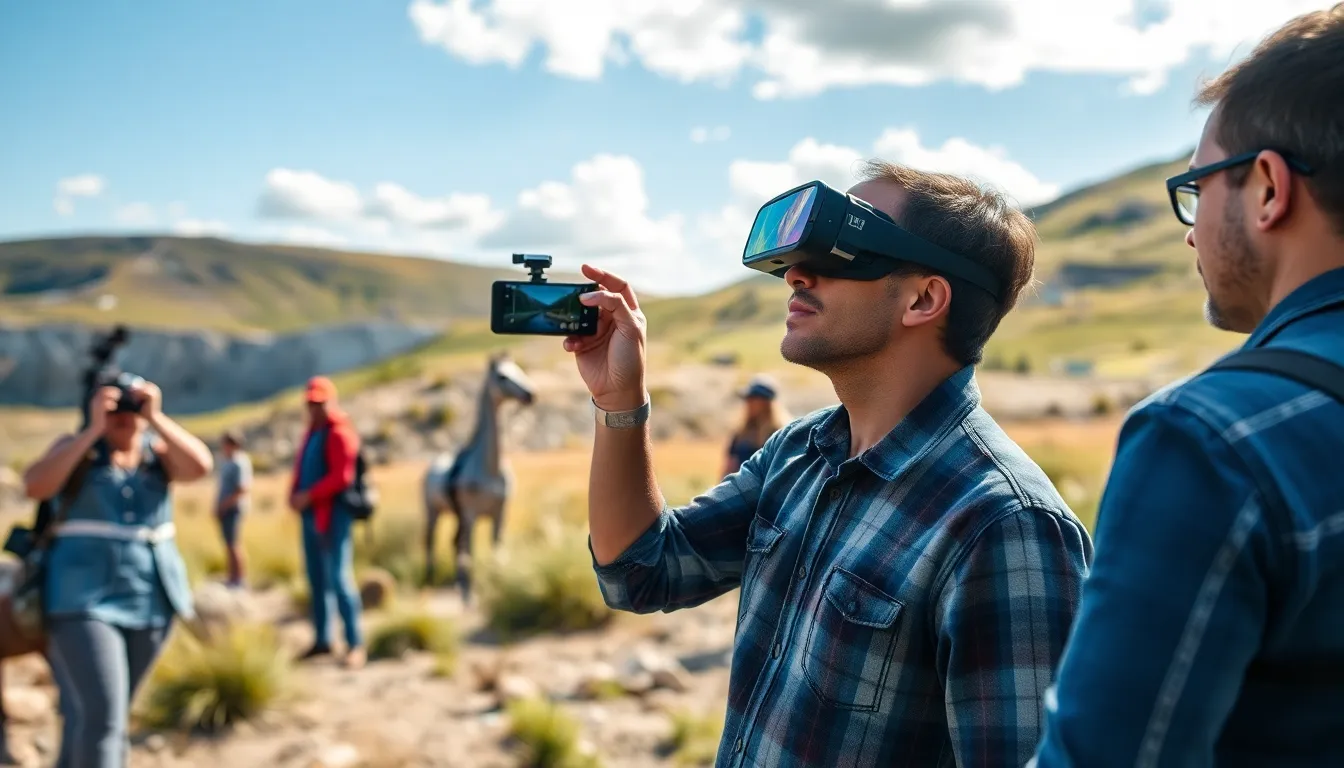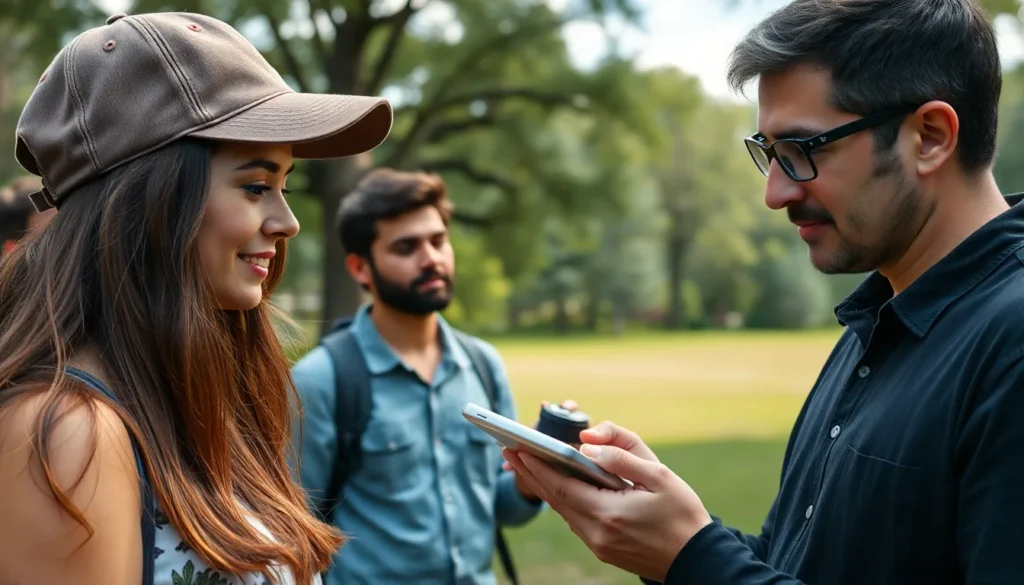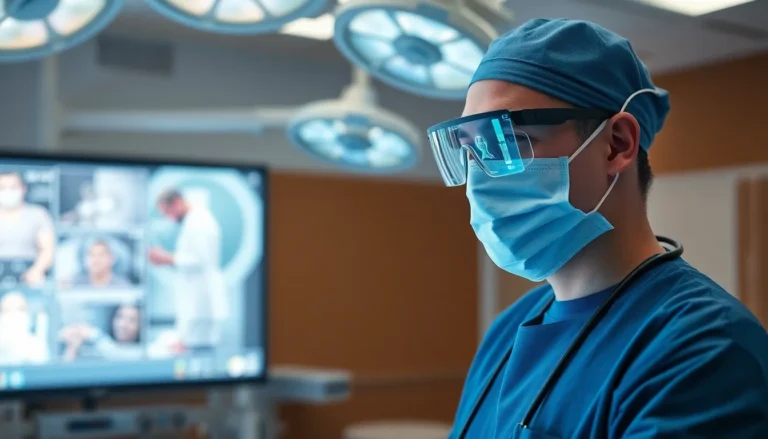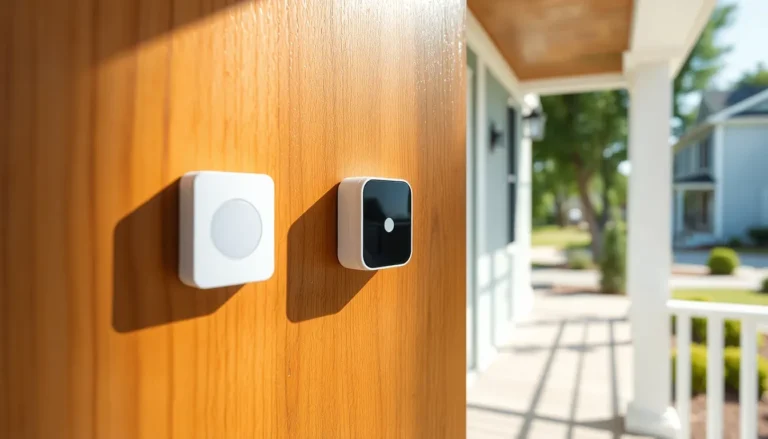Table of Contents
ToggleImagine you’re a filmmaker on the hunt for the perfect backdrop. You could spend hours wandering aimlessly or you could whip out your smartphone and let augmented reality do the heavy lifting. Location scouting with AR is like having a magic wand that instantly transforms your vision into reality, minus the fairy dust.
Overview of Location Scouting with AR
Augmented reality (AR) transforms location scouting by enhancing visual experiences for filmmakers. Instant visualizations enable them to see potential backdrops as they would appear on screen. Filmmakers no longer rely solely on traditional scouting methods, which can be time-consuming and limited.
Utilizing AR apps, directors and producers can explore locations in real-time. These tools overlay digital content onto the physical environment, allowing users to visualize camera angles and lighting conditions. This capability aids in making informed decisions on site suitability.
Location managers benefit from AR as well. They can share immersive previews with stakeholders, streamlining the approval process. Instead of relying on static images or descriptions, colleagues can experience locations more vividly.
Moreover, AR minimizes travel costs. Teams can evaluate multiple venues without physical visits, cutting down on expenses related to travel and lodging. This flexibility supports a faster production timeline while maintaining quality.
As AR technology advances, filmmakers gain access to more sophisticated tools. Enhanced features include 3D modeling and spatial mapping, providing detailed insights into each location’s potential. This level of engagement fosters creativity and innovation during pre-production.
Addressing challenges, AR can also pinpoint logistical considerations. Filmmakers can assess accessibility and nearby facilities, ensuring efficient production workflows. The combination of visual aid and practical evaluation transforms the approach to location scouting in filmmaking.
Benefits of Using AR in Location Scouting

Augmented reality (AR) offers significant advantages in location scouting, enabling filmmakers to streamline their processes and enhance their creative capabilities.
Enhanced Visualization
AR enhances visualization by overlaying digital elements onto real-world environments. Filmmakers experience a clearer understanding of how a location will appear on screen. They can visualize specific camera angles and lighting scenarios directly within the location, allowing for precise planning. This immediate feedback accelerates decision-making and ensures suitability for the project’s needs. With AR tools, locations transform into immersive experiences that guide artistic choices, making it easier to evaluate various settings without physical visits. Filmmakers can thus leverage enhanced visualization to optimize their shots while maintaining creative integrity.
Improved Collaboration
AR improves collaboration among team members during the location scouting process. By using AR apps, filmmakers and location managers share immersive previews with stakeholders for instant feedback. Remote teams experience real-time engagement with potential sites, which enhances communication and reduces misunderstandings. This visibility supports faster approvals, as everyone operates with a shared vision of the project. Stakeholders can assess and contribute to decisions effectively while remaining aligned on objectives. Enhanced collaboration through AR technology encourages teamwork and strengthens the creative process, ultimately leading to a more cohesive final product.
Challenges in Location Scouting with AR
Location scouting with AR presents several challenges that filmmakers must navigate. Understanding these obstacles helps in developing effective solutions.
Technical Limitations
Technical limitations can hinder the effectiveness of AR in location scouting. AR applications often require high-quality hardware for optimal performance, which may not be accessible to all filmmakers. Inconsistent lighting conditions can affect visual clarity, impacting decision-making. GPS inaccuracies can lead to misplaced virtual objects, causing confusion regarding actual site locations. Additionally, Internet connectivity issues may disrupt functionality, leading to incomplete experiences. Addressing these limitations requires investment in reliable technology and software updates.
User Experience Issues
User experience issues can significantly impact the adoption of AR in location scouting. Complexity in navigation within AR apps often frustrates users, deterring them from fully utilizing available features. Some users may find the learning curve steep, complicating the integration into established workflows. Complications with merging digital and real-world elements may lead to unrealistic expectations about how locations translate onscreen. Feedback mechanisms within the applications may also be lacking, hindering user engagement and collaboration. Ultimately, enhancing user experience is crucial for maximizing AR’s potential in location scouting.
Tools and Technologies for AR Location Scouting
AR transforms location scouting, utilizing innovative applications and hardware to maximize efficiency. Several tools have emerged to enhance how filmmakers visualize potential locations.
AR Applications
AR applications play a crucial role in location scouting. Popular tools like ARKit and ARCore allow filmmakers to create immersive experiences, blending digital and physical environments. These applications enable real-time visualization of camera angles and lighting, making it easier to assess the suitability of a location. Filmmakers can also collaborate with remote teams, sharing immersive previews for immediate feedback. Additionally, apps such as Magicplan enable quick measurements and overlays, streamlining the planning process. By leveraging these applications, filmmakers gain a competitive edge, ensuring every site aligns with their creative vision.
Hardware Requirements
Specific hardware enhances the effectiveness of AR applications during location scouting. Most AR applications function on smartphones and tablets equipped with advanced sensors and cameras, ensuring accurate spatial mapping. Devices like Microsoft HoloLens and Magic Leap One offer advanced capabilities, providing immersive experiences for users. High-performance graphics processing units enable smooth rendering of digital elements in real-time. It’s important for teams to ensure strong internet connectivity to facilitate seamless experience sharing. Together, these hardware components significantly improve the practicality and intensity of AR in scouting.
Real-World Case Studies
Several filmmakers have successfully utilized AR for location scouting, demonstrating its effectiveness in the industry. In 2022, the production team of a major blockbuster leveraged AR technology to visualize scenes in urban settings. By using ARKit, they accessed real-time visualizations of how different locations would look with their desired camera angles and lighting setups.
Another notable example comes from a documentary crew that used AR to explore remote natural landscapes. This approach reduced travel costs significantly, as they could assess multiple venues virtually. Evaluating these locations in AR resulted in faster decision-making and kept the production within budget.
In addition, a commercial production company showcased AR’s potential by integrating ARCore into their workflow. Stakeholders received immersive previews of locations, facilitating quicker approvals. Collaborative sessions became more efficient since everyone had a clear visual reference to discussions.
A recent pilot project also highlighted how AR helped troubleshoot location-specific challenges. Filmmakers identified potential issues related to lighting and space constraints before arriving on set. Such proactive planning enhanced the overall shooting experience and minimized costly adjustments.
Utilizing AR in these scenarios illustrates considerable benefits, including improved communication and enhanced visualization. Directors gained immediate feedback from team members, allowing for on-the-spot adjustments. As AR technology continues to evolve, filmmakers are likely to encounter even more sophisticated tools, further enhancing their location scouting capabilities. Each case study emphasizes the transformative impact of AR on the filmmaking process, promoting innovation and efficiency in an ever-competitive landscape.
Future Trends in AR Location Scouting
Advancements in AR technology are shaping the future of location scouting for filmmakers. Enhanced features like 3D modeling and spatial mapping are likely to become standard tools, allowing filmmakers to create detailed representations of potential locations. Improved hardware such as smartphones with advanced sensors and devices like Microsoft HoloLens will support these developments, enabling richer and more immersive experiences. Faster internet connectivity will also play a crucial role in ensuring seamless sharing of AR visuals.
Collaborative efforts in AR development will foster increased teamwork among filmmakers and location managers. Real-time feedback provided through AR apps will enhance communication, making it easier to address concerns and make quick adjustments. Future applications may integrate artificial intelligence, streamlining the selection process based on specific filmmaking needs.
Environmental awareness is increasingly influencing location scouting practices. AR’s ability to simulate various weather conditions and times of day will assist filmmakers in selecting the most suitable locations for their narratives. This capability will promote sustainable practices by reducing unnecessary travel and enabling assessments of multiple sites efficiently.
In addition, the use of AR in pre-visualization will likely lead to more innovative storytelling. Filmmakers will experiment with new creative possibilities by interacting with digital elements in real-world settings before actual shooting. Customizable AR tools may also emerge, allowing users to tailor experiences to their specific projects or preferences.
Ultimately, the future of AR in location scouting will embody a blend of technological innovation and creative exploration, transforming how filmmakers approach their work. Through these advancements, AR is set to redefine location scouting, ensuring it aligns with the evolving demands of the film industry.
The integration of augmented reality in location scouting is revolutionizing the filmmaking process. By providing instant visualizations and facilitating real-time collaboration, AR empowers filmmakers to make informed decisions quickly. As technology continues to advance, the potential for AR to enhance storytelling and streamline workflows will only grow.
Filmmakers can expect a future where AR becomes an essential tool, promoting creativity while reducing costs and travel. The ability to simulate various conditions and visualize scenes in real-time will redefine how locations are selected and utilized. Embracing this technology not only enhances production efficiency but also supports a more sustainable approach to filmmaking.







